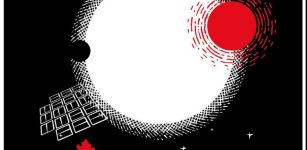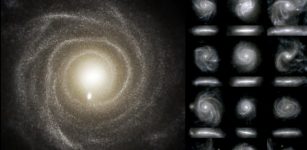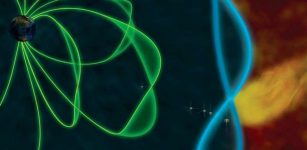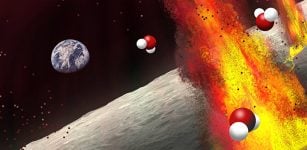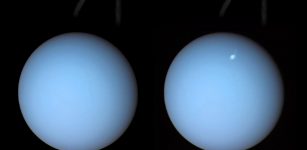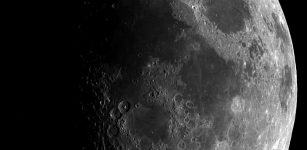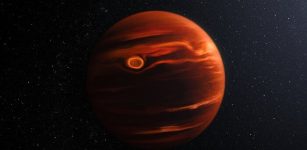Peculiar ‘Ravioli-Like’ Shapes Of Inner Moons Of Saturn – How Did They Form?
MessageToEagle.com – For the first time, researchers of the University of Bern show how the small inner moons of Saturn, with an unusual and rather spectacular shape, were formed.
The appearance of these small moons has been revealed by the Cassini spacecraft in April 2017. The close-ups showed objects that NASA described in its news release as flying-saucers with diameters of about 30 km.
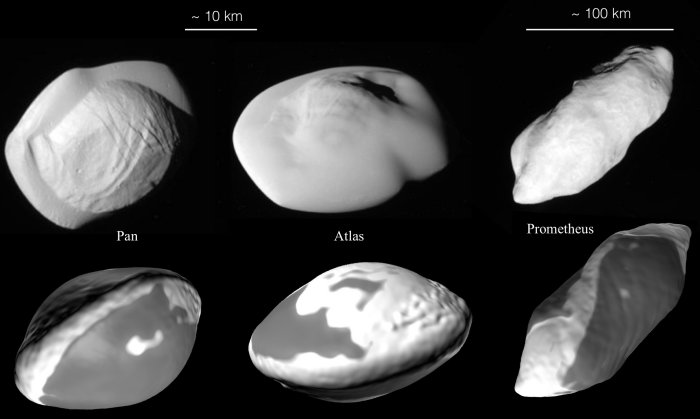
Computer simulations made by Martin Jutzi and Adrien Leleu, both members of the NCCR PlanetS, helped to recreate exactly the same shapes as in images captured by Cassini.
The simulations demonstrate, the shapes are a natural outcome of merging collisions among similar-sized little moons.
Researchers calculated the formation process of the small inner moons of Saturn. The first, simple tests worked well.
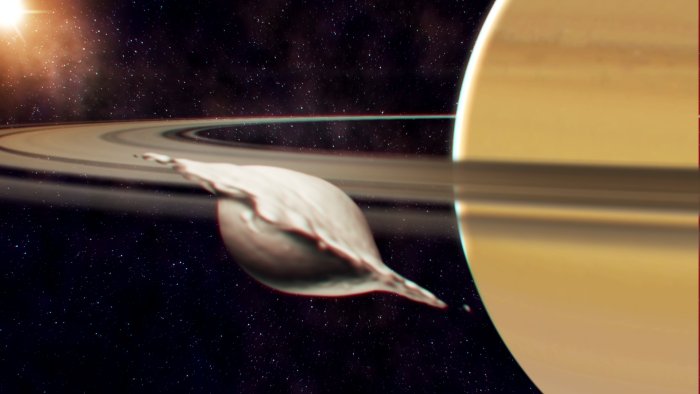
“The conditions close to Saturn are very special,” says Martin Jutzi. Since Saturn has 95 times more mass than Earth and the inner moons orbit the planet at a distance of less than half the distance between Earth and Moon, the tides are enormous and pull almost everything apart. Therefore, Saturn’s inner moons couldn’t have formed with these peculiar shapes by gradual accretion of material around a single core.
An alternative model called pyramidal regime suggests that these moons were formed by a series of mergers of similar sized little moonlets. With slightly more oblique impact angles, collisions resulted in elongated spaetzle-like shapes that closely resembled the 90-km long moon Prometheus as it was photographed by Cassini.
Based on the current orbit of the moons and their orbital environment, the researchers were able to estimate that the impact velocities were of the order of a few 10 m/s. Simulating collisions in this range for various impact angles, they obtained various stable shapes similar to ravioli and spaetzle, but only for low impact angles.
Collison of similar-sized moonlets orbiting around Saturn. Simulation by Adrien Leleu, Martin Jutzi and Martin Rubin / University of Bern
“That is why Saturn’s small moons look very different to comets that often have bilobed shapes,” explains Martin Jutzi.
Interestingly, the head-on collisions are not as rare as one might think. The small inner moons are believed to originate from Saturn’s rings, a thin disk located in the planet’s equatorial plane. Since Saturn isn’t a perfect sphere but rather oblate, it makes it hard for any object to leave this narrow plane. So, near head-on collisions are frequent and the impact angle tends to get even lower in subsequent encounters.
“A significant fraction of such merging collisions take place either at the first encounter or after 1-2 hit-and-run events.”
“In this respect, Saturn is almost a toy system to study these processes,” says Martin Rubin.
Researchers also found a possible explanation for a long-standing mystery concerning Saturn’s third largest moon named Iapetus.
Why does Iapetus have an oblate shape and a distinctive equatorial ridge? “
Our modelling results suggest that these features may be a result of a merger of similar-sized moons taking place with a close to head-on impact angle, similar to the smaller moons,” the researchers summarize.
MessageToEagle.com

